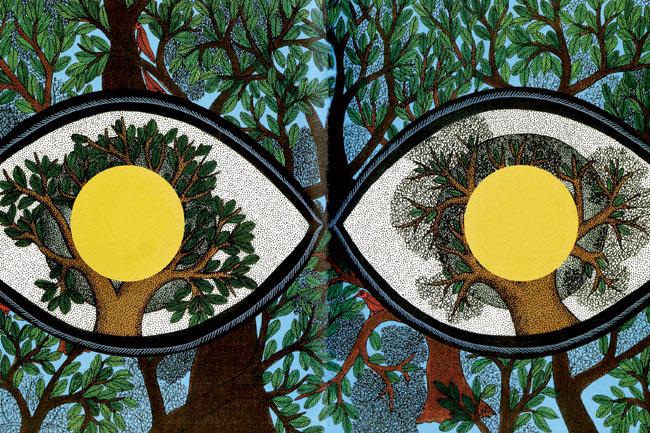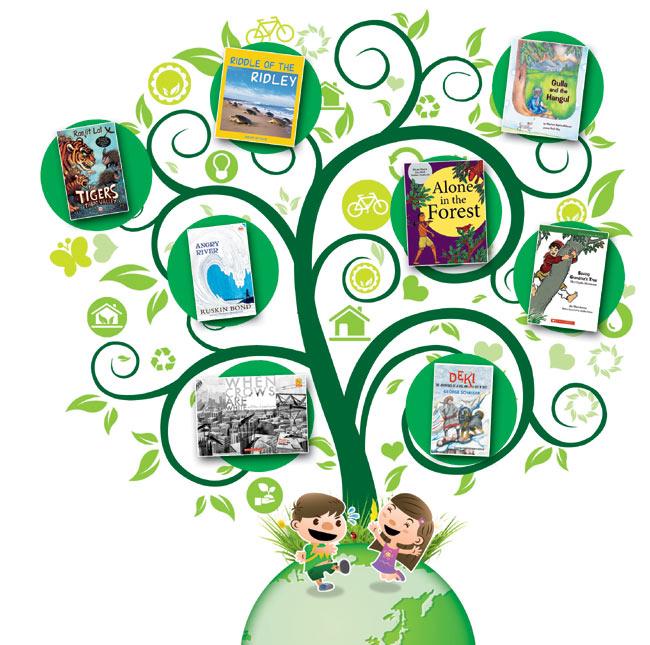The topic of saving the environment isn't new but age-old and has been bobbing up and down the stream of children's books in India. As of now, the stream is about to flood this genre, as we found out while speaking to publishers, writers and illustrators

The film Wall-E might soon be a thing of the present as litter and squalor is swamping us by way of polluted seas.
Yet, there’s hope as children’s books are using the theme of nature into much more — an awareness of our surroundings, dependency on nature and the precarious balance at which luxuries like oxygen and water are hinged.
ADVERTISEMENT

Pic courtesy/Alone in the forest, tara books
Vatsala Kaul Banerjee, Publishing Director, Children’s and Reference Books, Hachette, elaborates, “Young people respond to issues like this much more strongly and significantly than adults might. This is good because they are going to inherit the earth, so they better start putting right what generations before them have done wrong.”
Just a trend?
One must credit writers like Arup Kumar Dutta, Ruskin Bond, Deepak Dalal and Ranjit Lal who took the road less travelled by deliberately choosing to live near nature. “There was hardly anybody writing on such issues,” recalls Bond.
The 79-year-old legend from Landour, who has often written about human beings associated with nature, remarks, “The forestry around me has degraded as opposed to some years back. Animals and other wild creatures kill for hunger but it’s only humans that kill for 20-30 different reasons such as greed, jealousy and self-interest.”
Dutta, who in 1978, had written the Kaziranga Trail, asserts, “Degradation had already started doing our time but it was slower. Yet, writers these days are not doing enough as they concentrate on quick metro reads,” thereby shortchanging the cause, Dutta feels. Agreeing on that note, Bond also says that, “Writing on the environment cause is good but the altruistic reason also needs to be there.”
Dead and boring
Environmentalist and bird watcher Lal who has written many books including the recent title, he Tigers of Taboo Valley, shares, “that the idea (for the book) came from a news article where a male tiger started tending to his cubs when the female passed away in Ranthambore.”
Lal emphasises that entertainment is important as he learnt from ornithologist’s Salim Ali's corpus called Books of India and Pakistan that were “palatable to everybody” in his words. Lamenting how books were a dull read earlier, publishers are taking the leap to make stories engaging, visually enthralling, and across themes.
From Irrawady to Hangul
Banking on the sensitivity and impressions a child soaks in, Deeya Nayar, editor, Tulika Books says, “Children are naturally empathetic. So, if you tell it to them, simply, like a story or a creative non-fiction narrative that’s not thrust boringly on them — make it visual — they respond.” Since the late 1990s, Tulika Books and Tara Books have been pioneers with such books. Handpicking neglected issues like a tribal in a wildlife sanctuary (A Wild Elephant At Camp, 1996) and a boy from the Andaman Islands (Andamans Boy) from Tulika saw shift in how the child reader was perceived.
Considering that both publishing houses were at their nascent stages, Deeya Nayar from Tulika as well as Maegan Dobson-Sippy, from Tara Books, claim that it was a conscious decision. Recently, the Ridley turtle, Irrawady dolphin, Hangul (Kashmiri stag), rainwater harvesting, and even the ubiquitous crows, the Chipko movement as well as Tibetan landscape have made it into Indian children’s storybooks.

Drawing from nature
“In many of our books, the world-view is that of the artist; many hail from a tribal or folk art community. Many such communities have a deep connection to the environment around them, for example the Gond community,” says Dobson-Sippy. Bhajju Shyam, a Gond artist, known for his illustrations in Alone in the Forest and Gobble You Up, with other artists, moved from Chhatisgarh’s interiors to Bhopal.
He shares, “I always illustrate from my memory, as I’ve seen it in the village. But now, children are questioning if the images are true as they can’t relation to the tradition of the village anymore.” Tracking the metamorphosis that India’s villages have been experiencing, he feels that there has been a tremendous change as things that existed in the village 25 years ago are hardly present now.
 Subscribe today by clicking the link and stay updated with the latest news!" Click here!
Subscribe today by clicking the link and stay updated with the latest news!" Click here!







